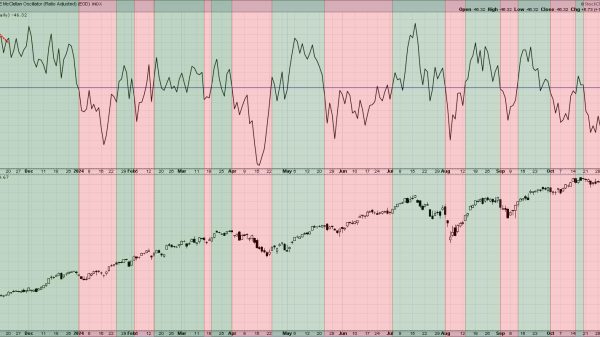In times of banking and financial crises, central banks always intervene. This is not a law of nature, but it is an empirical law of central bank behavior. The Federal Reserve was created 110 years ago specifically to address banking panics by expanding money and credit when needed, by providing what was called in the Federal Reserve Act of 1913 an “elastic currency,” so it could make loans in otherwise illiquid markets, when private institutions can’t or won’t.
The great Victorian banking thinker (as well as private banker) Walter Bagehot proposed that the Bank of England “lend freely” to quell a panic, and the central banks of the world today are all his disciples in this respect. With the post–Bretton Woods, pure-fiat-currency Federal Reserve, the US currency is elastic with a vengeance. That’s how we got a Fed with assets of $3 trillion during the great real estate bust of 2007–12 and then the truly remarkable $8.9 trillion Fed balance sheet in the wake of the covid financial crisis of 2020.
Austrian economists are generally against any central bank intervention at all, but suppose with me arguendo that the case for intervention in a crisis prevails: that the periodic financial crises that do and doubtless will continue to occur should be addressed by the temporary expansion of the compact power and money-printing ability of the government and its central bank—especially the money-printing power, which shifts assets and risks to the government’s balance sheet. The central bank’s balance sheet thus expands to offset the pressured private balance sheets. Even if the crisis was caused by the actions of the central bank itself, as Austrians would point out, and even though the expansion creates moral hazard for the future, the central bank’s elastic currency and balance sheet are handy in midst of the crisis. This is the credo of all modern central banks.
But what happens when the crisis is over?
Note well the essential word temporary in the preceding argument for crisis intervention. The crisis interventions should be temporary. If prolonged, they will tend more toward monopoly and bureaucracy and less toward innovation, growth, and economic well-being than will competitive, enterprising markets. In the extreme, long-term intervention will produce markets characterized by socialist stagnation. How do you get interventions withdrawn when the crisis is over?
Consider a huge and radical intervention of the last fifteen years. The Federal Reserve started buying mortgage securities at the beginning of 2009. The amount of mortgage securities which had been owned by the Federal Reserve until then, from 1913 to 2008, was exactly zero. Then, faced with the shriveling of the vast housing bubble and the panic of 2008, the Fed was led by Chairman Ben Bernanke into a new intervention and started buying mortgage securities to prop up house prices and the housing finance market. This was the opposite of the former Fed orthodoxy, which held that the monetary power of the central bank should not be used to favor any particular economic sector.
Bernanke’s theory was that this radical intervention would be temporary. As he testified before Congress in February 2011: “What we are doing here is a temporary measure which will be reversed so that at the end of the process, the money supply will be normalized, the amount of the Fed’s balance sheet will be normalized, and there will be no permanent increase, either in money outstanding, in the Fed’s balance sheet, or in inflation” (Italics added).
Needless to say, the promised normalization didn’t happen. As of the end of April 2023, the Fed owns $2.6 trillion of mortgage securities. That is larger than what the total assets of the Fed were at the end of 2008. That number and the interest rate risk it represents would have astonished previous generations of Federal Reserve governors. The Fed also experienced a massive mark to market loss on these mortgage securities: a loss of $408 billion as of the end of 2022, or almost ten times the Fed’s total capital of $42 billion.
In the intervening years, the Fed’s mortgage purchases, driving down mortgage interest rates to an unprecedented less than 3 percent, stoked a major house price inflation. By 2021, US national house prices were in a new bubble, their increase rising to an annual rate of over 16 percent. Faced with runaway inflation of house prices, the Fed has unbelievably continued to buy hundreds of billions of dollars of mortgage securities, and never sells any. I know of no one who now defends this far overextended intervention.
In my view, the Federal Reserve should get out of the business of pushing up house prices, and the Fed’s mortgage portfolio should go back to the normal amount of exactly zero.
Emergency interventions, however sincere the original intent that they be temporary, inevitably build up political and economic constituencies who profit from them and want their continuation. When the central bank monetizes government debt, the biggest such constituent is the government itself.
So here is our essential and unsolved problem: How do you reverse the central bank emergency programs, originally thought and meant to be temporary, after the crisis has passed? No one has successfully addressed the issue of how to do this—not even central banking’s most ardent supporters propose an answer.
That the emergency interventions of the crisis should be withdrawn in the normal times which follow I call the Cincinnatian doctrine. The name comes from the ancient Roman hero Cincinnatus, who was called from his plow to save the state and made temporary dictator of Rome. He did save the state, and then, mission accomplished, eft his dictatorship and went back to his farm. Similarly, two millennia later, George Washington, the victorious general and hero who had saved the United States and might perhaps have made himself king, voluntarily resigned his commission and went back to his farm, becoming to the eighteenth century “the modern Cincinnatus.”
But the Federal Reserve does not have the republican virtue of Cincinnatus or Washington, so how do we get the Fed to go back to its farm? The difficulty of ending vast emergency interventions whose day has passed but which have become established and advantageous to their constituencies and have increased the power enjoyed by the central bankers is the Cincinnatian problem. There is no easy answer to the Cincinnatian problem. It deserves our intense focus.






















